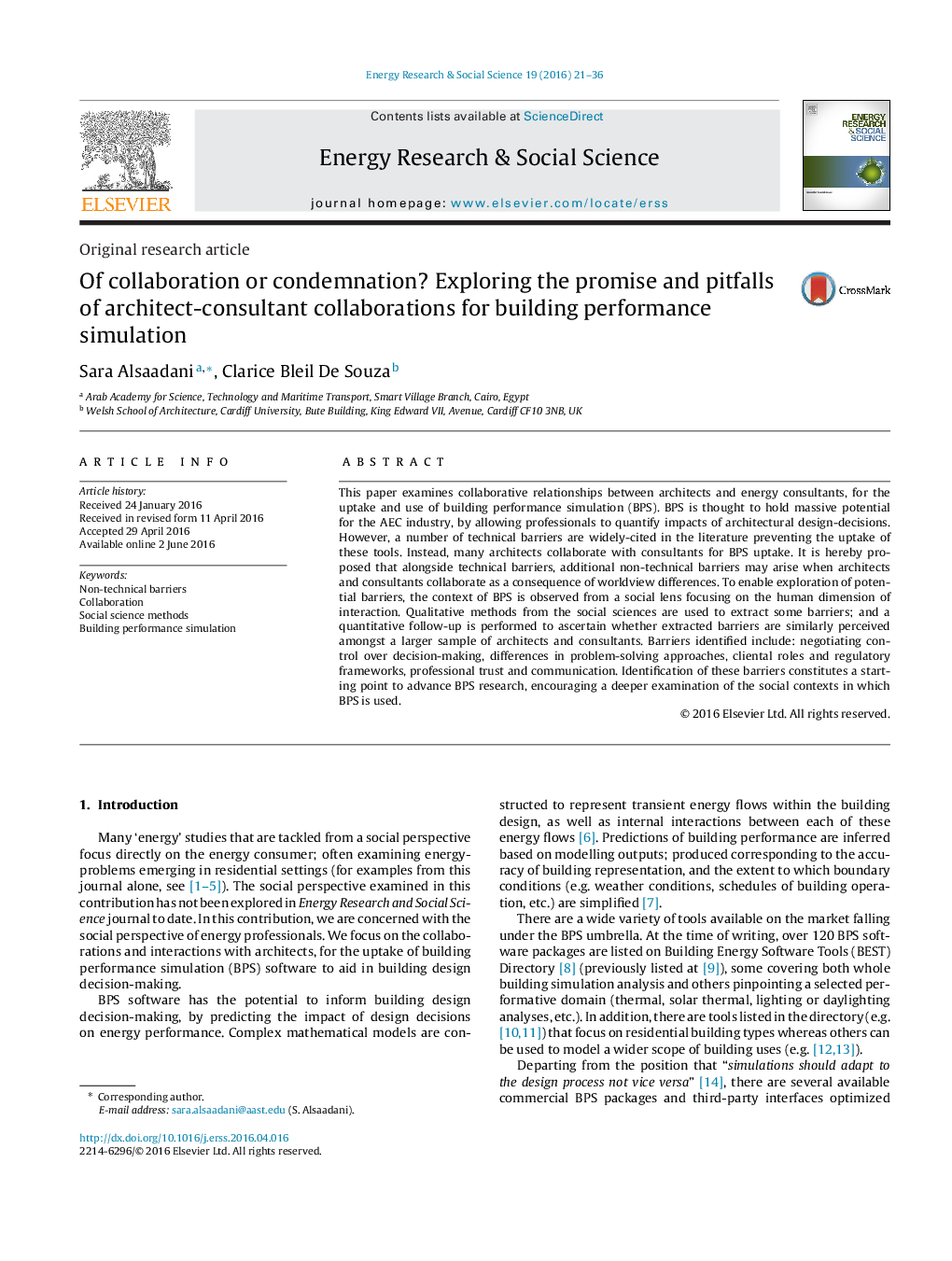| Article ID | Journal | Published Year | Pages | File Type |
|---|---|---|---|---|
| 6557910 | Energy Research & Social Science | 2016 | 16 Pages |
Abstract
This paper examines collaborative relationships between architects and energy consultants, for the uptake and use of building performance simulation (BPS). BPS is thought to hold massive potential for the AEC industry, by allowing professionals to quantify impacts of architectural design-decisions. However, a number of technical barriers are widely-cited in the literature preventing the uptake of these tools. Instead, many architects collaborate with consultants for BPS uptake. It is hereby proposed that alongside technical barriers, additional non-technical barriers may arise when architects and consultants collaborate as a consequence of worldview differences. To enable exploration of potential barriers, the context of BPS is observed from a social lens focusing on the human dimension of interaction. Qualitative methods from the social sciences are used to extract some barriers; and a quantitative follow-up is performed to ascertain whether extracted barriers are similarly perceived amongst a larger sample of architects and consultants. Barriers identified include: negotiating control over decision-making, differences in problem-solving approaches, cliental roles and regulatory frameworks, professional trust and communication. Identification of these barriers constitutes a starting point to advance BPS research, encouraging a deeper examination of the social contexts in which BPS is used.
Related Topics
Physical Sciences and Engineering
Energy
Energy (General)
Authors
Sara Alsaadani, Clarice Bleil De Souza,
